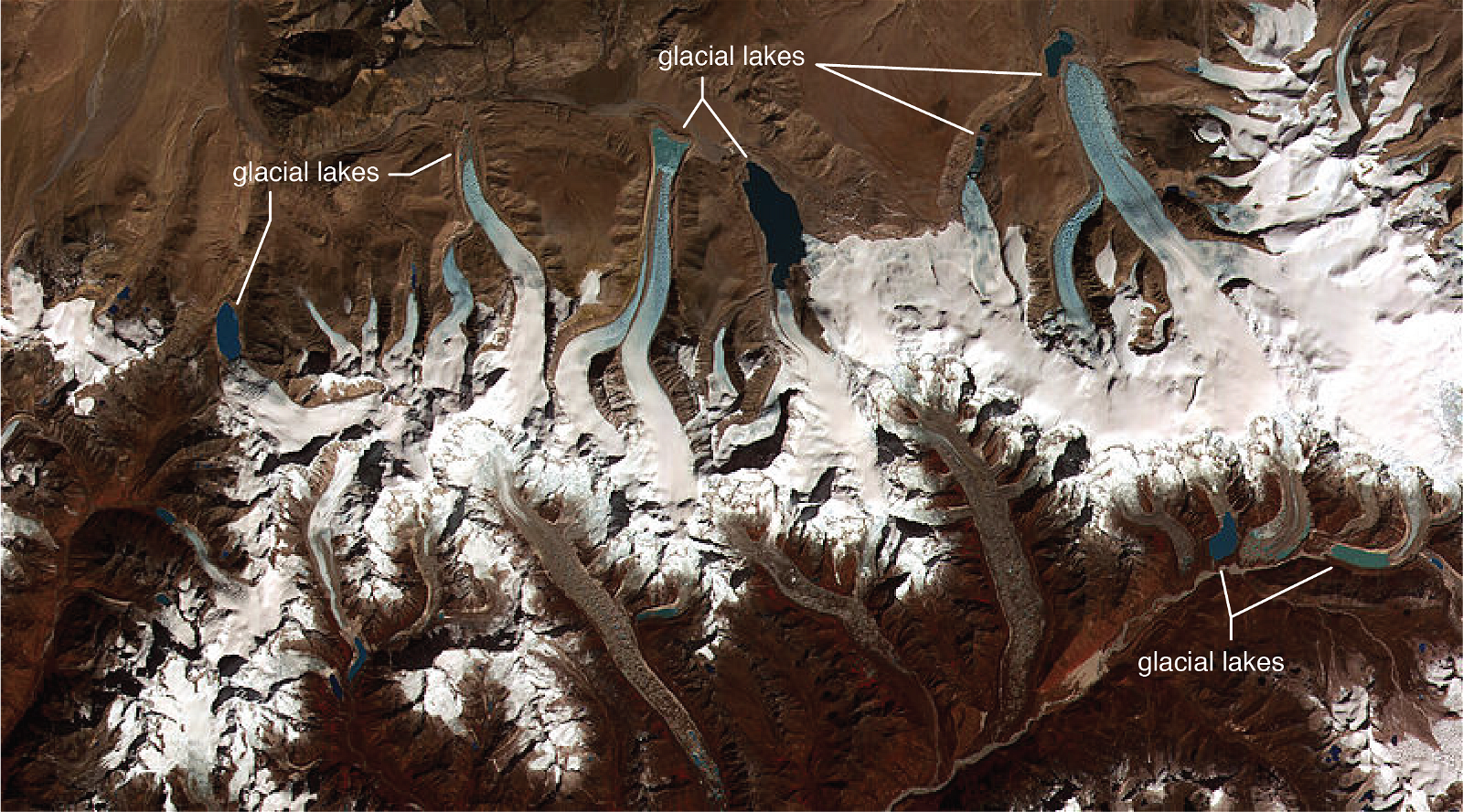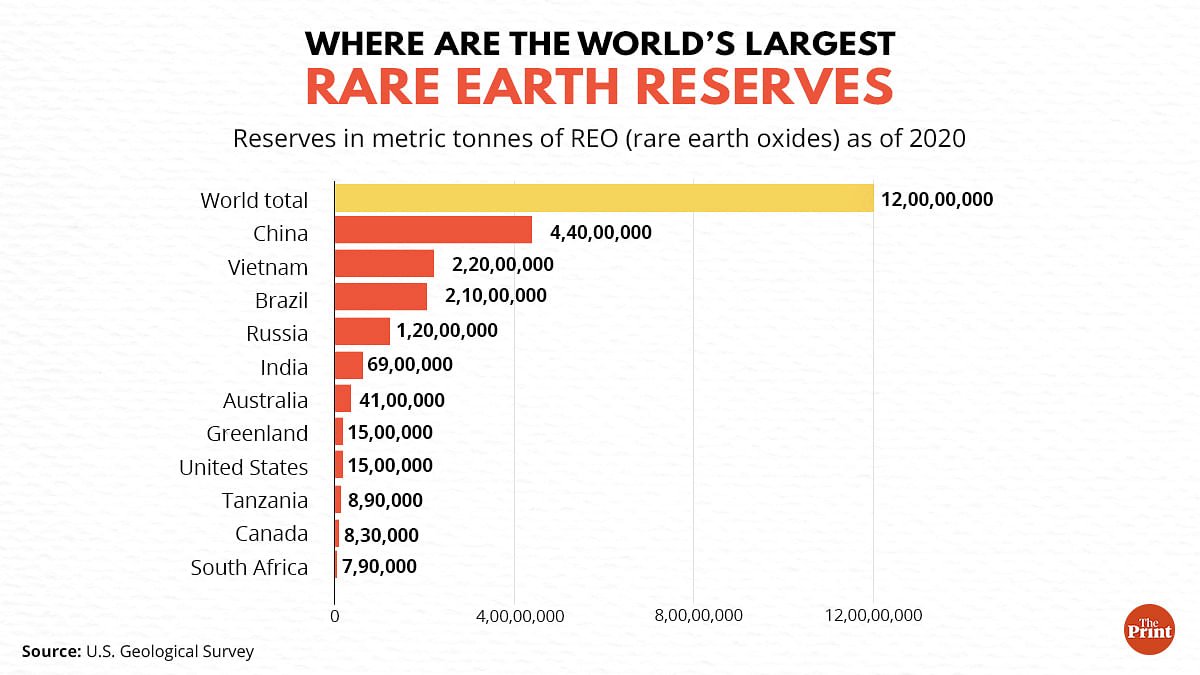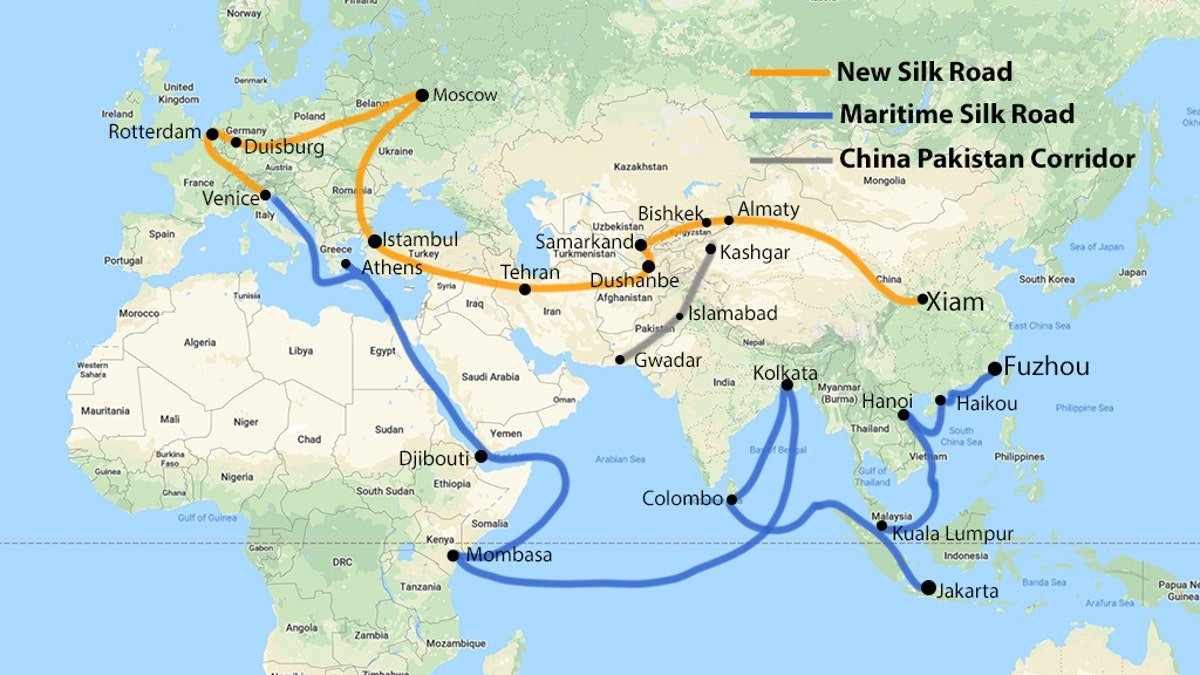
Glacial Lake Outburst Flood of South Lhonak Lake in Sikkim
Subscribe to Never Miss an Important Update! Assured Discounts on New Products!
Must Join PMF IAS Telegram Channel & PMF IAS History Telegram Channel
Glacial Lake Outburst Flood in Sikkim
- Context (TH | IE | IE | DTE): Due to the outburst of South Lhonak Lake, a glacial lake, flash floods have inundated Sikkim and breached the Chungthang Dam.
Glacial Lake Outburst Flood (GLOF)
- Glacial lakes form when a glacier erodes the land, and the depression is filled by glacial meltwater.
- It typically forms at the foot of a glacier but may form on, in, or under it.

- As glacial lakes grow larger, they become more dangerous because glacial lakes are mostly dammed by unstable ice or sediment.
- In case the boundary around them breaks, huge amounts of water is released causing catastrophic floods downstream. This is called glacial lake outburst floods (GLOF).
- GLOF can be triggered by several reasons, including earthquakes, heavy rains and ice avalanches.
GLOF of South Lhonak Lake
- South Lhonak Lake a located in Sikkim’s far northwestern region.
- It is one of the fastest expanding lakes in the Sikkim Himalaya region, and was a potentially hazardous lakes susceptible to GLOFs.
- The probable causes for the GLOF of South Lhonak Lake are:
- Cloudburst: Excess rainwater from cloudbrust has caused sudden surge in water level due to which the GLOF occurred.
- Nepal Earthquake: GLOF my have been triggered by 6.2 magnitude Nepal Earthquake that occurred a day before.
- Ice Dam Failure: It happens when glacial lake water volume exceeds the dam’s capacity, leading to potential weakening or rupturing of the dam, releasing a torrent of water downstream.
What is a Cloudburst?
|

Consequences of GLOF of South Lhonak Lake
Flash Floods in Sikkim
- GLOF has resulted in a flash flood in the Teesta river basin in Sikkim.
- Thses flash flood has cost human lives and damaged infrastructure.
Flash Flood
|
Chungthang Dam Breach
- The Chungthang Dam breached due to the sheer force and speed of the water from GLOF.
- The huge amounts of water released from the dam further worsened the flooding of Sikkim.
Chungthang Dam
|
Way Ahead
- The series of disasters that occurred in Sikkim after the triggering of GLOF of South Lhonak Lake again proves that cascading hazards are becoming frequent due to climate change and human activities.
- It also reinforced that Himalayan regions are more susceptible to such disasters.
- Addressing these disasters requires an “integrated disaster management approach” that considers the connection between hazards and specific incidents to formulate effective risk-mitigation plans.
|





![PMF IAS Environment for UPSC 2022-23 [paperback] PMF IAS [Nov 30, 2021]…](https://pmfias.b-cdn.net/wp-content/uploads/2024/04/pmfiasenvironmentforupsc2022-23paperbackpmfiasnov302021.jpg)











